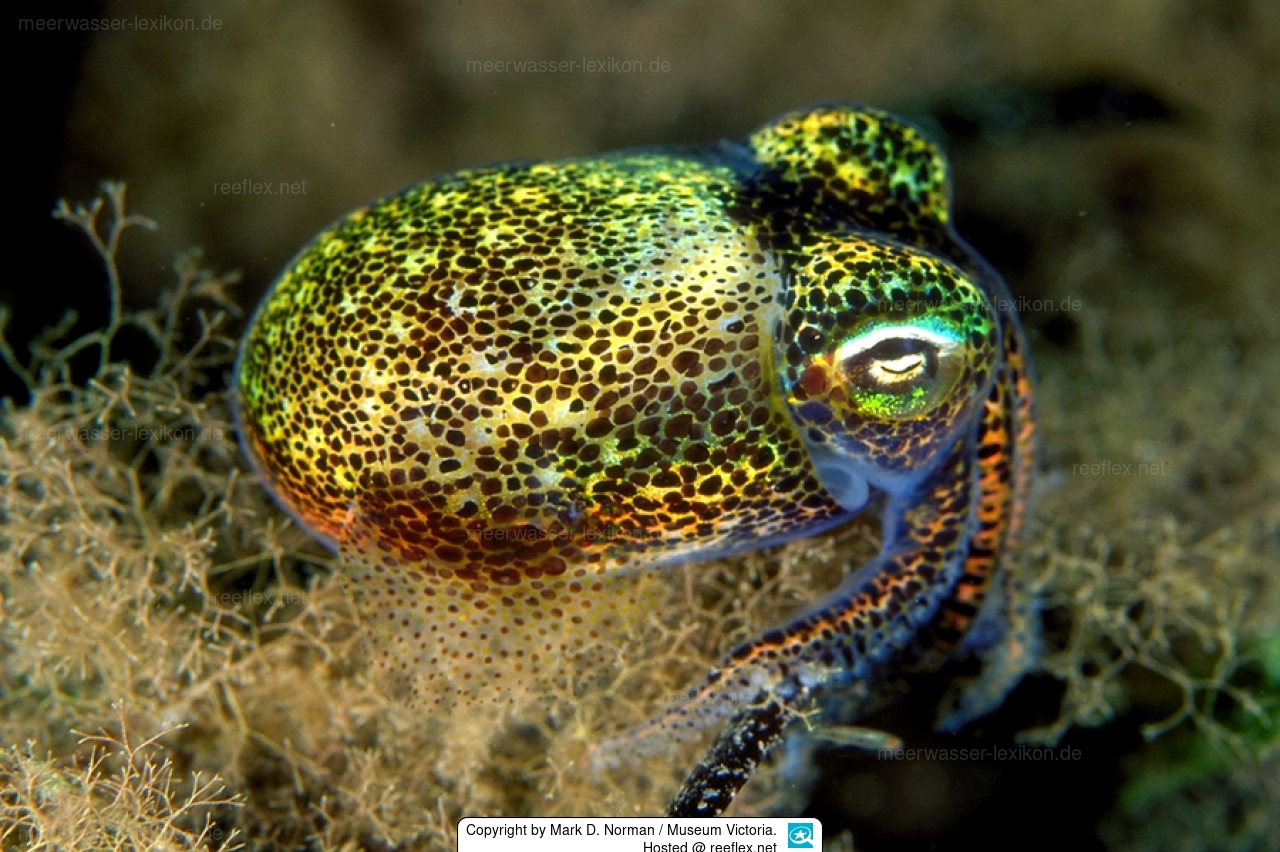Info
Euprymna tasmanica prefers sand and mud habitats in shallow coastal waters, often near seagrass beds.
These small squid bury themselves in the sand during the day and come out at night to hunt for small shrimp and fish.
The skin on the upper head and body of this squid is covered with mucus glands that can coat the whole animal with a layer of sand. This allows the octopus to remain camouflaged from the sandy background.
At night, this squid uses a light organ in its gill cavity to lift its silhouette.
The light organ contains special glowing bacteria that are fed sugar by the squid and produce light in return.
By raising its silhouette, the octopus can remain undetected when swimming above upward-looking predators.
Females lay round orange-cream coloured eggs in clumps.
Euprymna tasmanica is a, round, bottom-dwelling squid with a g Large pair of rounded fins on the sides of the body, encompassing the rear two-thirds of the body.
It displays an iridescent green colour with large dark brown spots (chromatophores) scattered over the body, head and arms.
The mantle cavity (below the body) contains a large, butterfly-shaped light organ.
Mantle length up to 4 cm, with arms up to 8cm.
These small squid bury themselves in the sand during the day and come out at night to hunt for small shrimp and fish.
The skin on the upper head and body of this squid is covered with mucus glands that can coat the whole animal with a layer of sand. This allows the octopus to remain camouflaged from the sandy background.
At night, this squid uses a light organ in its gill cavity to lift its silhouette.
The light organ contains special glowing bacteria that are fed sugar by the squid and produce light in return.
By raising its silhouette, the octopus can remain undetected when swimming above upward-looking predators.
Females lay round orange-cream coloured eggs in clumps.
Euprymna tasmanica is a, round, bottom-dwelling squid with a g Large pair of rounded fins on the sides of the body, encompassing the rear two-thirds of the body.
It displays an iridescent green colour with large dark brown spots (chromatophores) scattered over the body, head and arms.
The mantle cavity (below the body) contains a large, butterfly-shaped light organ.
Mantle length up to 4 cm, with arms up to 8cm.







 Dr. Mark D. Norman / Museum Victoria, Australien
Dr. Mark D. Norman / Museum Victoria, Australien






